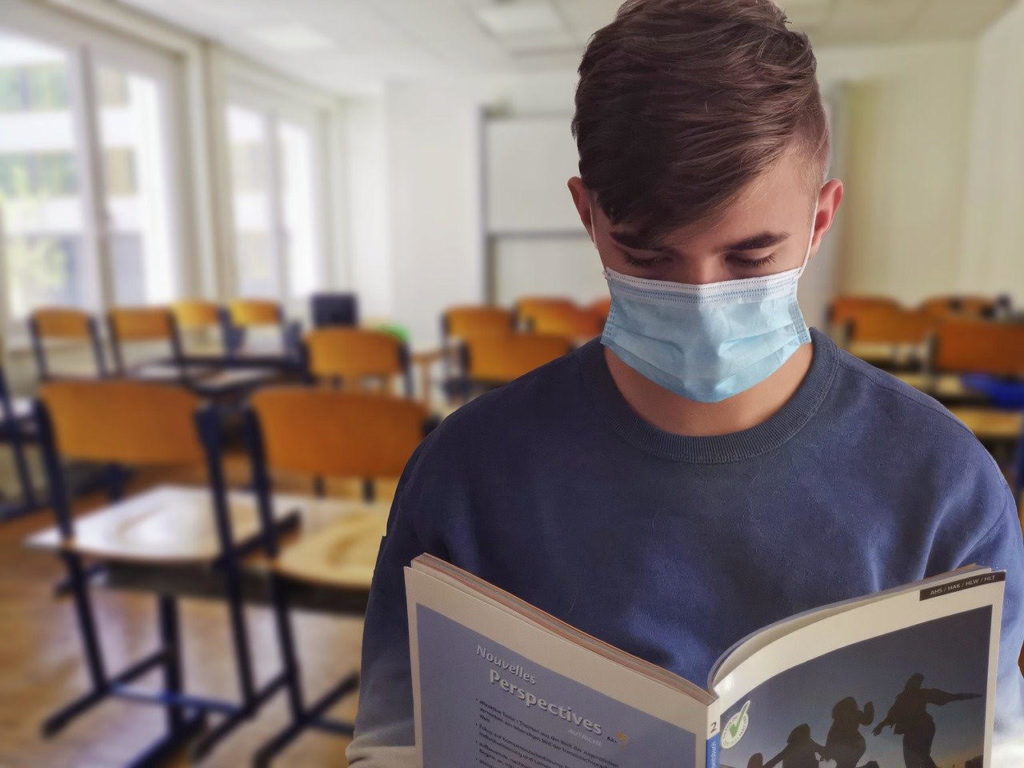85 Percent of Hampshire County Towns Have Had In-Person Learning—When Will We?

Since September, my husband has taught in-person in a Hampshire County public school. He comes from a family of teachers. Two of his brothers and a sister-in-law are currently teaching in-person in three eastern Massachusetts districts. His parents recently retired from a fourth eastern Massachusetts district that continues to offer in-person. Given that every educator in our family is teaching in-person, I wondered how unusual it is that the Amherst-Pelham Regional School District (ARPS) has been largely remote.
In short—ARPS is a distinct outlier in Hampshire County.
Seventeen out of 20 Hampshire County towns had in-person learning between October 26th (the date ARPS returned to remote) and today: Belchertown, Chesterfield, Cummington, Easthampton, Goshen, Granby, Hadley, Hatfield, Huntington, Middlefield, Northampton, South Hadley, Southampton, Ware, Westhampton, Williamsburg, Worthington (all data verified with school committees, see link).
Most towns have been open for K-12. Even with cases rising, only Cummington and Easthampton have transitioned back to remote— 75 percent of Hampshire County towns still have in-person learning today. Indeed, Granby, Northampton, and the six Hampshire Regional towns have brought more students into their schools since Thanksgiving.
ARPS accounts for two (Amherst, Pelham) of the three Hampshire County towns that have been fully remote since October 26th. Plainfield, in the Mohawk Trail District, is the third. Mohawk Trail plans to open on Jan. 11th. Cummington will reopen on Jan. 19th. Easthampton will revisit when they can re-open on Dec. 8th. In other words, every Hampshire County school district is open today, has a date set to open in January, or is monitoring for when they can re-open—ARPS is alone in doing none of these.
An argument has been made that our school members do not live only in our towns. All 20 Hampshire County towns have school choice students. ARPS has 231 choice students, reflecting 9 percent of the districts’ total population. Hadley’s schools have 21 percent choice students, yet has 81 percent of their elementary school students in-person for 4.5 hours every day (as reported by their school committee).
Public health experts continue to state the importance of in-person learning and that, with all of the precautions in place, transmission is generally not occurring in schools, especially not elementary schools. Hampshire County towns have weighed in. If transmission were occurring in schools, they would have closed—immediately. As of December 3rd, no Hampshire County district has had more than four COVID cases enter their buildings (see link for COVID cases in schools). That includes elementary through high school and both students and staff. Arguably, school cases would be well into the double digits if transmission were occurring in schools.
Districts around us and statements by public health experts continue to show that in-person learning can be done safely and is best for students. With two special education teachers in my family who were among the first to return to their buildings—special education, ELL, and homeless students need the option of in-person learning. Personally, with a kindergartener and a fourth grader and a spouse teaching in-person daily, we have had to hire someone for $18/ hour so that I can continue my job. Elementary school families are especially struggling in the remote context, both financially and psychologically. In total, 68 percent of ARPS families requested in-person learning and are not getting what 75 percent of local towns are offering right now and what every Hampshire County town, but Amherst and Pelham, plans to offer by January.
It is worth noting that the four teachers in my family take COVID safety seriously. We followed the recommendations and did not see each other for Thanksgiving. One has a two-month-old baby. Yet, they all feel safe in their elementary and high schools. They wear masks and so do their students. In fact, the students are policing each other, not only in school, but also when unsafe behavior occurs outside of school.
This is not a Republican agenda. I am a Black woman, a Democrat, and a social scientist—experts and data must guide this critical decision. We have the data in front of us on how every other Hampshire County district is moving forward and making in-person learning work. I implore the school committee and APEA to bring us in line with the rest of the county by working together to open school buildings safely.
Database of Hampshire County schools’ in-person status and COVID cases: https://tinyurl.com/HampshireCountySchools
Allecia Reid is a psychologist and the parent of two Crocker Farm students.
Editor’s Note: The Amherst Indy contacted the state Department of Elementary and Secondary Education, seeking to verify the information in spreadsheets provided by Allecia Reid. However, spokesperson Jacqueline Reis told the Indy via email on Dec. 11 that the department does not have an updated spreadsheet of districts and their current learning models. The most recent state-compiled data is as of Aug. 18, and can be found here under “List of Reopening Models”: https://www.doe.mass.edu/covid19/

3 thoughts on “85 Percent of Hampshire County Towns Have Had In-Person Learning—When Will We?”